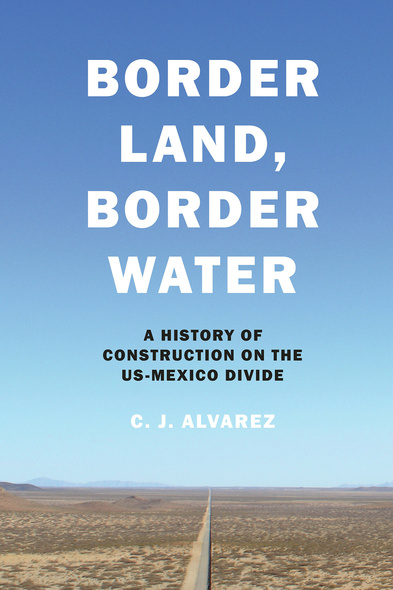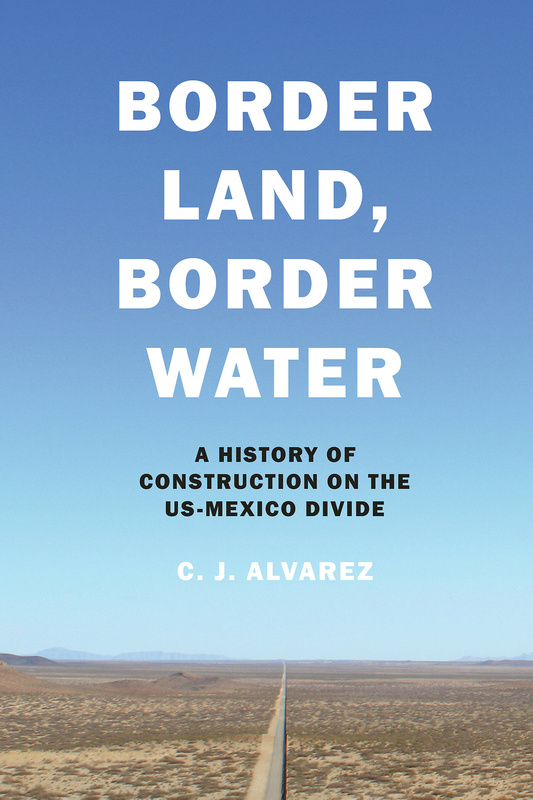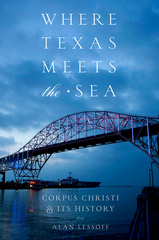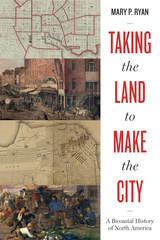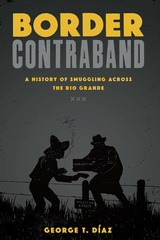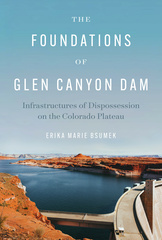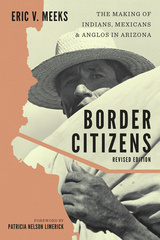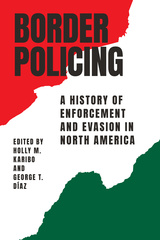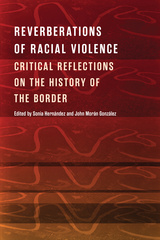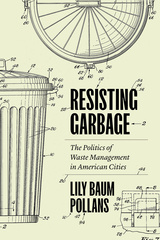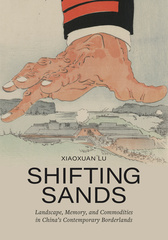Border Land, Border Water
A History of Construction on the US-Mexico Divide
Winner, Abbott Lowell Cummings Award, Vernacular Architecture Forum, 2020
Winner, Elisabeth Blair MacDougall Book Award, Society of Architectural Historians, 2021
From the boundary surveys of the 1850s to the ever-expanding fences and highway networks of the twenty-first century, Border Land, Border Water examines the history of the construction projects that have shaped the region where the United States and Mexico meet.
Tracing the accretion of ports of entry, boundary markers, transportation networks, fences and barriers, surveillance infrastructure, and dams and other river engineering projects, C. J. Alvarez advances a broad chronological narrative that captures the full life cycle of border building. He explains how initial groundbreaking in the nineteenth century transitioned to unbridled faith in the capacity to control the movement of people, goods, and water through the use of physical structures. By the 1960s, however, the built environment of the border began to display increasingly obvious systemic flaws. More often than not, Alvarez shows, federal agencies in both countries responded with more construction—“compensatory building” designed to mitigate unsustainable policies relating to immigration, black markets, and the natural world. Border Land, Border Water reframes our understanding of how the border has come to look and function as it does and is essential to current debates about the future of the US-Mexico divide.
Border Land, Border Water is a must-read for historians of the US-Mexico divide, environmental historians, and anyone interested in better understanding from a historical perspective current calls [for] construction on the border.
[Border Land, Border Water] helps connect the images of the border in contemporary media to the region’s historical precedents...Alvarez’s book succeeds as a synthesis of border history, told through anecdotes and with narrative clarity...the cumulative effect of its chapter subjects resituates the borderlands within conversations about natural and built environments. In doing so, this study adds depth to a region—though situated along the southwestern border of the United States—that no longer resides at the nation’s margins.
Alvarez bridges borderlands and environmental histories in order to examine how the built world on the border 'functions and for whom.' He achieves this by looking at the border region as multiple spaces that different actors (military, private companies, governments) utilized for their own political motives...Border Land, Border Water not only examines the ways the built environment changed the border region, it also urges people question the history of the land where they grew up.
Original, ambitious, and timely...Border Land, Border Water takes on a challenging topic. In the process, it demonstrates the benefits of ignoring the conceptual categories—especially the political boundaries—often used to delimit scholarly inquiry. The result is a welcome reminder that, while borders may originate as imaginary lines on a map, they ultimately become cultural landscapes that shape human lives and the natural world.
[A] deeply researched and very timely new book...Spanning the period from the Mexican-American War almost to the present, Alvarez’s narrative should be read as a cautionary tale for would-be wall builders, beginning as it does 'amid the breathless ignorance of exploration' and ending 'in the willful ignorance of the overbuilt border of today'...By taking the long view, Alvarez captures the full life cycle of border works. That allows him to illuminate connections and unintended consequences that more near-sighted builders, policymakers, and social scientists rarely perceived.
The border between the United States and Mexico has been extensively researched over the past fifty years, but C.J. Alvarez is the first scholar to successfully combine two seemingly discrete fields of inquiry: the history of border surveillance and the history of hydraulic engineering...Scholars have long understood that the [International Boundary and Water Commission] and Border Patrol have overlapping jurisdictions, common purposes, and a symbiotic relationship. Alvarez, however, is the first scholar to show how deeply indebted each is to the other—and, most importantly, how subservient the IBWC has been to the requirements of border control and surveillance.
[An] impressive study…essential reading for borderland courses and for experts and journalists seeking to understand how Mexico and the United States (mostly) cooperated to police, regulate, discourage, or prevent human migration into the United States.
[An] illuminating book...Informed by impressive archival research, Border Land, Border Water provides a valuable and highly original perspective on the United States-Mexico borderlands...In helping us to see underneath and beyond the infrastructure that litters the borderlands and that so many take for granted, C.J. Alvarez allows us to see what was lost, and imagine what have could have been. Most importantly, perhaps, he challenges us to bring about a different borderlands, one that embodies 'ecological stewardship, deeper cultural understanding, and peace.'
This is a thoroughly enthralling work whose title does not fully encapsulate the depth of intersecting topics covered. Scholars interested in borderlands studies, water history, landscape architecture, the Mexican Revolution, political ecology, built landscapes, and the history of policing will find this work particularly useful...Alvarez acts as a guide to the border that we all need. Nothing appears to escape his attention; he weaves the ecological with the economic as deftly as he does the cultural with the political. Border Land, Border Water stands with the best of borderlands histories, by such scholars as Casey Walsh, that demonstrate the importance of transnational development in our globalized economy.
Centering the state in this story, Alvarez makes a welcome contribution to the historiography of the U.S.-Mexico borderlands...Highlighting the ways in which federal policymakers, law enforcement authorities, and land and water management officials impacted people and the environment, Alvarez reminds us that the state remains an important subject of historical analysis...[Border Land, Border Water] is a timely contribution to our understanding of the U.S.-Mexico divide as the Trump administration moves forward with enhanced border barrier construction.
Border Land, Border Water capably illustrates the entangled history of the built and natural environments of the US–Mexico borderlands. This volume is a significant contribution to the field of architectural history as well as environmental history and borderlands studies.
The strength of Border Land, Border Water is found not only in Alvarez’s keen analysis, but also in the way it weaves together stories of local authorities and residents who are dealing with the policies being pressed upon them from far-removed power centers ... Alvarez’ scholarship is a welcome and essential work about the borderlands, and a timely one considering the ongoing national debate regarding the efficacy and inefficacies of U.S. border policy and construction.
Alvarez composes a broad, detailed historical narrative about the US-Mexico border that is well-researched and ambitious in its scope…Border Land, Border Water is a superb work. Alvarez’s analysis is clear, and his arguments are compelling. From the land surveys that delineated the border to the construction of dams and reengineering of rivers, he cogently narrates the grand interventions people made to transform the US-Mexico border region for their own needs.
The greatest value of this book is perhaps the fact that it traces so methodically the piecemeal changes to a landscape that is now unrecognizable as the landscape of 200 years ago. While that could be said of countless landscapes, Alvarez chooses a case study that is timely and that deserves to be elucidated as other parts of the country grapple with the role and behavior of law enforcement, the effects of climate change and environmental change, and the prospect of a giant black wall, impermeable to almost every force, being built across a delicate ecosystem...[Border Land, Border Water] is important to a broader audience, particular at this moment, when the pressures of development collide with the natural world in myriad and ever-increasing ways.
[Border Land, Border Water] draws on a combination of environmental history of the U.S. West and histories of the borderlands and border enforcement. The marriage of the two is productive and long overdue...I was rapt by Border Land, Border Water…Such stunning use of visual material—at once detailed, intriguing, and argumentative—helped me imagine richer ways to incorporate visual archival material into writing.
C. J. Alvarez has written a rich and engrossing story of difficult journeys, nation-building, environmental transformation (and degradation), and elusive efforts to control people and the environment. His book uniquely weaves together a history of policing and of the natural and built environment along the entire length of the border. It is an excellent work and should be required reading for historians and students of the US-Mexico borderlands.
1. The Border Environment in the Nineteenth Century
2. The Border and the Mexican Revolution
3. Police and Waterworks on the Border: Aspirations to Control through Building
4. Police and Waterworks on the Border: Systemic Flaws
5. Building the Border of Today
Epilogue
Acknowledgments
Notes
Bibliography
Index

